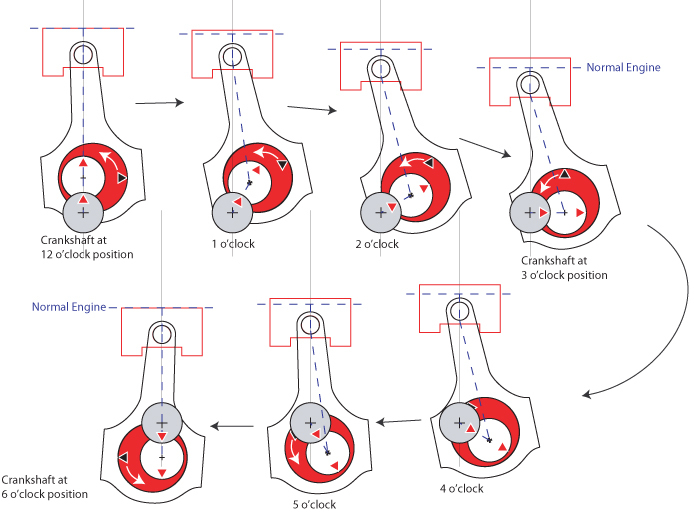Tim_S
Mechanical
- Oct 6, 2016
- 2
A Google trawl uncovered a few avenues that have been explored using an Eccentric bearing on the big end journal which gives the big end of the connecting rod a secondary motion (on top of the simple rotary motion of the crankshaft).
Most have had something to do with Variable Compression Ratio test bed engines. So I was having a tinker with the idea and thought maybe there were gains to be had from a continuously rotating eccentric bearing in terms of increasing leverage when the piston is near TDC. I thought that the trajectory of the piston could be delayed by, say, 10 degrees or so, getting the crankshaft rotated past the 12 o'clock position before igniting the mix.
A criticism was levied that friction arising from the additional bearing surface area would more than wipe out any potential gains.
Does anyone have any strong reasons why an eccentric bearing would be a really good or conversely a really bad idea ?
Most have had something to do with Variable Compression Ratio test bed engines. So I was having a tinker with the idea and thought maybe there were gains to be had from a continuously rotating eccentric bearing in terms of increasing leverage when the piston is near TDC. I thought that the trajectory of the piston could be delayed by, say, 10 degrees or so, getting the crankshaft rotated past the 12 o'clock position before igniting the mix.
A criticism was levied that friction arising from the additional bearing surface area would more than wipe out any potential gains.
Does anyone have any strong reasons why an eccentric bearing would be a really good or conversely a really bad idea ?

